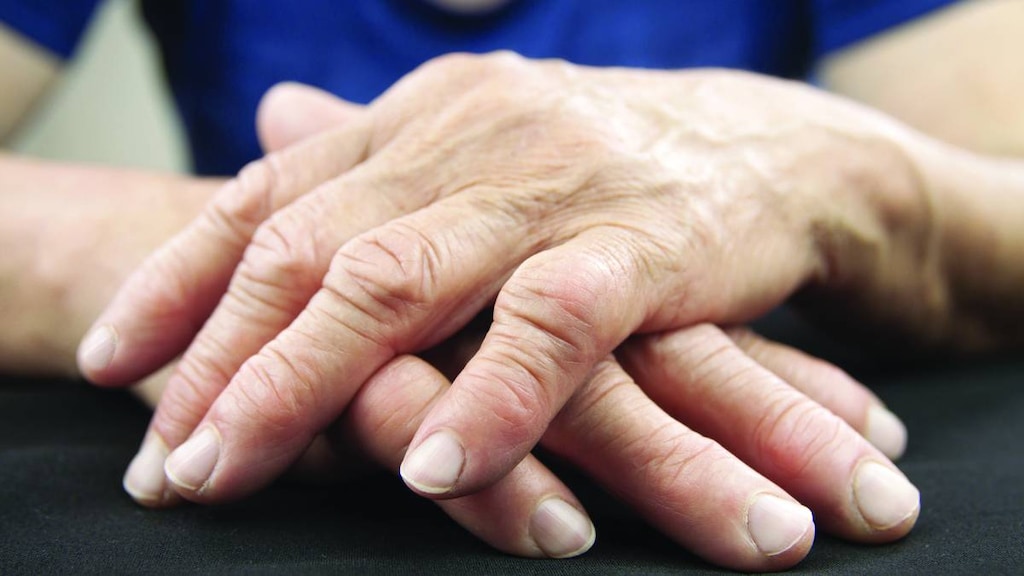Dosage Forms
Excipient information presented when available (limited, particularly for generics); consult specific product labeling.
Solution, Subcutaneous [preservative free]:
Actimmune: 2,000,000 units/0.5 mL (0.5 mL)
Pharmacology
Mechanism of Action
Interferon gamma participates in immunoregulation by enhancing the oxidative metabolism of macrophages; it also enhances antibody dependent cellular cytotoxicity, activates natural killer cells and has a role in the expression of Fc receptors and major histocompatibility antigens.
Pharmacokinetics/Pharmacodynamics
Absorption
IM, SubQ: >89%
Time to Peak
Plasma: IM: ~4 hours (1.5 ng/mL); SubQ: ~7 hours (0.6 ng/mL)
Half-Life Elimination
IM: ~3 hours, SubQ: ~6 hours
Use: Labeled Indications
Chronic granulomatous disease: Reduction in the frequency and severity of serious infections associated with chronic granulomatous disease
Malignant osteopetrosis (severe): To delay time to disease progression in patients with severe, malignant osteopetrosis
Contraindications
Hypersensitivity to interferon gamma, E. coli derived products, or any component of the formulation
Dosage and Administration
Dosing: Adult
Note: Dosing expressed in mcg; 50 mcg is equivalent to 1 million units (50 mcg/m2 is equivalent to 1 million units/m2).
Chronic granulomatous disease: SubQ: 50 mcg/m2 (1 million units/m2) 3 times weekly; maximum dose: 50 mcg/m2
Malignant osteopetrosis (severe): SubQ: 50 mcg/m2 (1 million units/m2) 3 times weekly; maximum dose: 50 mcg/m2
Dosing: Geriatric
Refer to adult dosing.
Dosing: Pediatric
Note: Dosing expressed in mcg; 50 mcg is equivalent to 1 million units (50 mcg/m2 is equivalent to 1 million units/m2).
Chronic granulomatous disease: Children and Adolescents: SubQ:
Body surface area (BSA) ≤0.5 m2: 1.5 mcg/kg/dose 3 times weekly; maximum dose: 50 mcg/m2
BSA >0.5 m2: 50 mcg/m2 (1 million units/m2) 3 times weekly; maximum dose: 50 mcg/m2
Malignant osteopetrosis (severe): Infants, Children, and Adolescents: SubQ:
Body surface area (BSA) ≤0.5 m2: 1.5 mcg/kg/dose 3 times weekly; maximum dose: 50 mcg/m2
BSA >0.5 m2: 50 mcg/m2 (1 million units/m2) 3 times weekly; maximum dose: 50 mcg/m2
Dosing adjustment for toxicity: Infants, Children, and Adolescents: If severe reactions occur, reduce dose by 50% or therapy should be interrupted until adverse reaction abates.
Dosing: Adjustment for Toxicity
If severe reactions occur, reduce dose by 50% or therapy should be interrupted until adverse reaction abates.
Administration
SubQ: Administer by SubQ injection into the right and left deltoid or anterior thigh. Consider premedication with acetaminophen and/or bedtime administration to minimize adverse reactions (eg, flu-like symptoms). Do not mix with other drugs in the same syringe.
Storage
Store intact vials at 2°C to 8°C (36°F to 46°F); do not freeze. Avoid excessive or vigorous agitation; do not shake. Discard if intact vial is left at room temperature for >12 hours prior to use. Discard unused portion of vial.
Drug Interactions
Zidovudine: Interferons may enhance the adverse/toxic effect of Zidovudine. Interferons may decrease the metabolism of Zidovudine. Monitor therapy
Adverse Reactions
Based on 50 mcg/m2 dose administered 3 times weekly for chronic granulomatous disease
>10%:
Central nervous system: Fever (52%), headache (33%), chills (14%), fatigue (14%)
Dermatologic: Rash (17%)
Gastrointestinal: Diarrhea (14%), vomiting (13%)
Local: Injection site erythema or tenderness (14%)
1% to 10%:
Central nervous system: Depression (3%)
Gastrointestinal: Nausea (10%), abdominal pain (8%)
Neuromuscular & skeletal: Myalgia (6%), arthralgia (2%), back pain (2%)
<1%, postmarketing, and/or case reports: Alkaline phosphatase elevated, atopic dermatitis, granulomatous colitis, hepatomegaly, hypersensitivity reactions, hypokalemia, neutropenia, Stevens-Johnson syndrome
Additional adverse reactions noted at doses >100 mcg/m2 administered 3 times weekly: ALT increased, AST increased, autoantibodies increased, bronchospasm, chest discomfort, confusion, dermatomyositis exacerbation, disorientation, DVT, gait disturbance, GI bleeding, hallucinations, heart block, heart failure, hepatic insufficiency, hyperglycemia, hypertriglyceridemia, hyponatremia, hypotension, interstitial pneumonitis, lupus-like syndrome, MI, neutropenia, pancreatitis (may be fatal), Parkinsonian symptoms, PE, proteinuria, renal insufficiency (reversible), seizure, syncope, tachyarrhythmia, tachypnea, thrombocytopenia, TIA
Warnings/Precautions
Concerns related to adverse effects:
- Bone marrow suppression: Dose-related reversible neutropenia and thrombocytopenia (may be severe) have been reported; use caution in patients with myelosuppression.
- CNS effects: Neurologic disorders (ie, decreased mental status, gait disturbances, dizziness) have been noted at the higher doses (>250 mcg/m2/day); most of these abnormalities were reversible within a few days after dose reduction or discontinuation. Use with caution in patients with a history of seizure disorder or compromised CNS function.
- Flu-like symptoms: Acute and transient flu-like symptoms (eg, fever, headache, chills, myalgia, fatigue) have been noted at the higher doses (>250 mcg/m2/day) and may exacerbate preexisting cardiovascular disorders; some of the flu-like symptoms may be minimized by bedtime administration.
- Hepatotoxicity: Elevations of AST and/or ALT (up to 25-fold) have been observed and were reversible with dose reduction or interruption of treatment. Incidence may be increased in children <1 year; perform monthly liver function assessments in this age group; modify dosage if severe elevations of liver enzyme develop.
- Hypersensitivity reactions: Acute serious hypersensitivity reactions have been reported (case reports); transient cutaneous rashes may occur; treatment interruption may be necessary. Discontinue therapy immediately if an acute reaction occurs.
Disease-related concerns:
- Cardiovascular disease: Use with caution in patients with preexisting cardiovascular disease, including ischemia, heart failure, or arrhythmia. In a scientific statement from the American Heart Association, interferon has been determined to be an agent that may either cause reversible direct myocardial toxicity or exacerbate underlying myocardial dysfunction (magnitude: moderate/major) (AHA [Page 2016]).
- Hepatic function impairment: Drug accumulation may occur in patients with advanced hepatic disease.
- Renal function impairment: Drug accumulation may occur in patients with severe renal insufficiency; renal toxicity has been reported.
Concurrent drug therapy issues:
- Drug-drug interactions: Potentially significant interactions may exist, requiring dose or frequency adjustment, additional monitoring, and/or selection of alternative therapy. Consult drug interactions database for more detailed information.
Dosage form specific issues:
- Latex: The vial stopper may contain dry natural rubber and may cause allergic reactions.
Monitoring Parameters
CBC with differential, platelets, LFTs (monthly in children <1 year), electrolytes, BUN, creatinine, and urinalysis prior to therapy and at 3-month intervals
Pregnancy
Pregnancy Considerations
Adverse events have been observed in animal reproduction studies.
Patient Education
- Discuss specific use of drug and side effects with patient as it relates to treatment. (HCAHPS: During this hospital stay, were you given any medicine that you had not taken before? Before giving you any new medicine, how often did hospital staff tell you what the medicine was for? How often did hospital staff describe possible side effects in a way you could understand?)
- Patient may experience injection site irritation, flu-like symptoms, diarrhea, nausea, vomiting, muscle pain, or loss of strength and energy. Have patient report immediately to prescriber signs of infection; signs of liver problems (dark urine; fatigue; lack of appetite; nausea; abdominal pain; light-colored stools; vomiting; or yellow skin); signs of kidney problems (unable to pass urine; blood in the urine; change in amount of urine passed; or weight gain); signs of bleeding (vomiting blood or vomit that looks like coffee grounds; coughing up blood; blood in the urine; black; red; or tarry stools; bleeding from the gums; abnormal vaginal bleeding; bruises without a reason or that get bigger; or any severe or persistent bleeding); signs of skin infection; confusion; change in balance; abnormal gait; dizziness; passing out; seizures; injection site bruising, lump, or edema; or sensing things that seem real but are not (HCAHPS).
- Educate patient about signs of a significant reaction (eg, wheezing; chest tightness; fever; itching; bad cough; blue skin color; seizures; or swelling of face, lips, tongue, or throat). Note: This is not a comprehensive list of all side effects. Patient should consult prescriber for additional questions.
Intended Use and Disclaimer: Should not be printed and given to patients. This information is intended to serve as a concise initial reference for health care professionals to use when discussing medications with a patient. You must ultimately rely on your own discretion, experience and judgment in diagnosing, treating, and advising patients.




